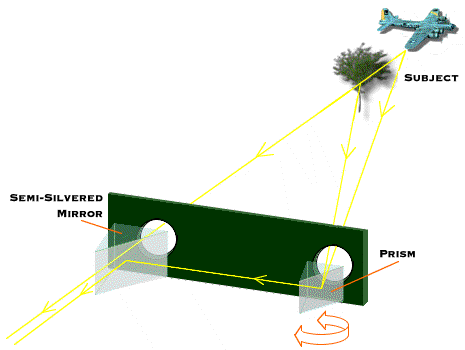





Range finders were just one of the many optical instruments designed and made by the scientists and technicians of the Optical Munitions Panel, during the Second World War. Before the (now wide-spread) use of radar to determine accurate distances between weapons and their targets, optical range finders were used for all sorts of military target ranging, including naval, land and air gunnery.
Human eyes can judge distances because each eye sees a slightly different view of an object against a background. However, human stereo vision is limited to distances of less than about 90 m (300 feet), because our eyes are fairly close together. The range finder was developed to overcome this limitation, and effectively increases the distance between the eyes.


In a range finder, two mirrors are mounted at either end of a bar; they reflect the scene from two different viewpoints to the centre of the bar, and it is here that they can be compared. By overlapping the images, and adjusting one of the mirrors, the images viewed through a range finder can be made to coincide exactly. The angle by which the mirror needs to be moved can be used to calculate the distance to the object being viewed. Telescopes are sometimes be included in the system for magnification.








 | Top |
Bright Sparcs |
ASAPWeb |
| Top |
Bright Sparcs |
ASAPWeb |
